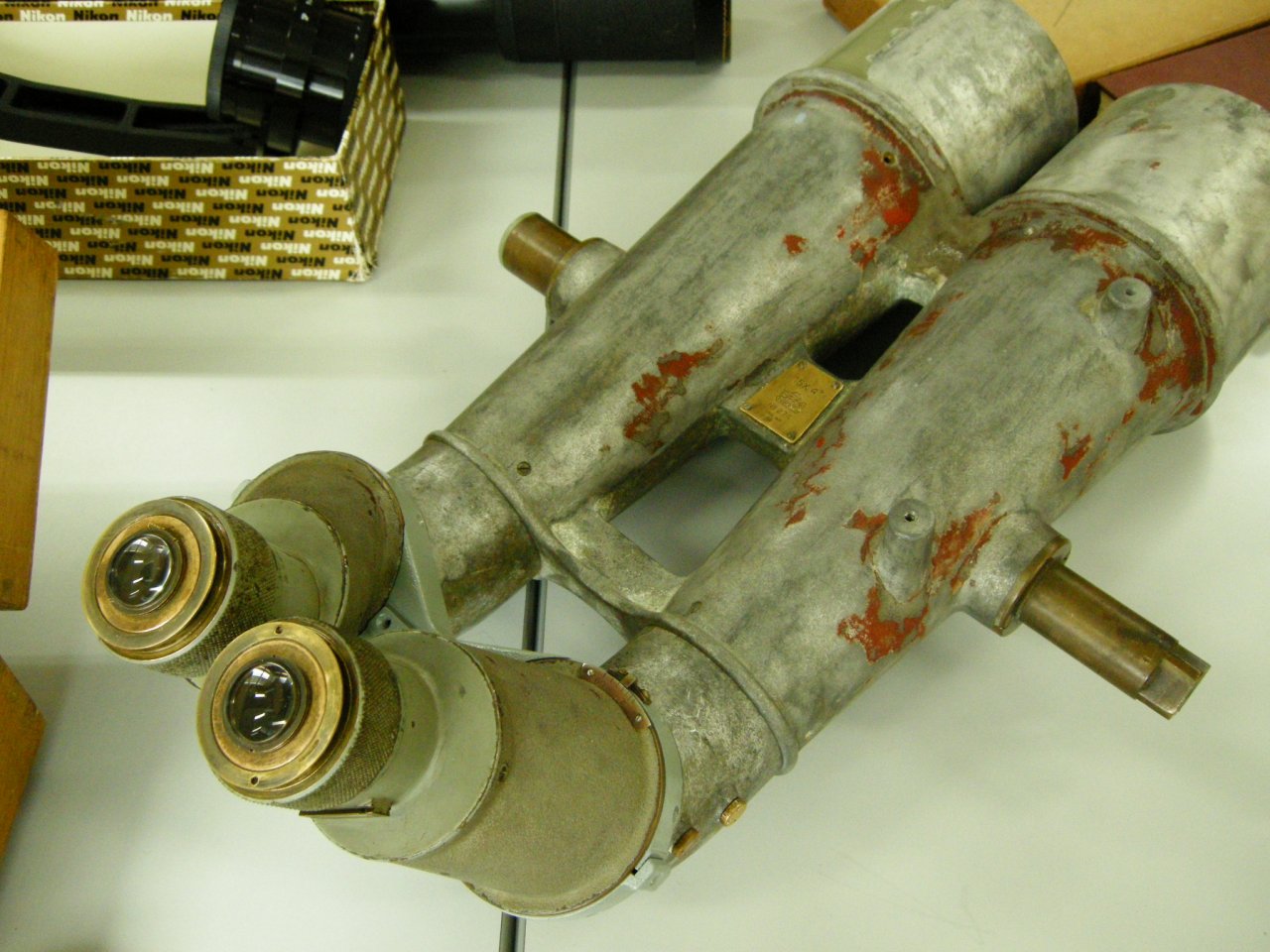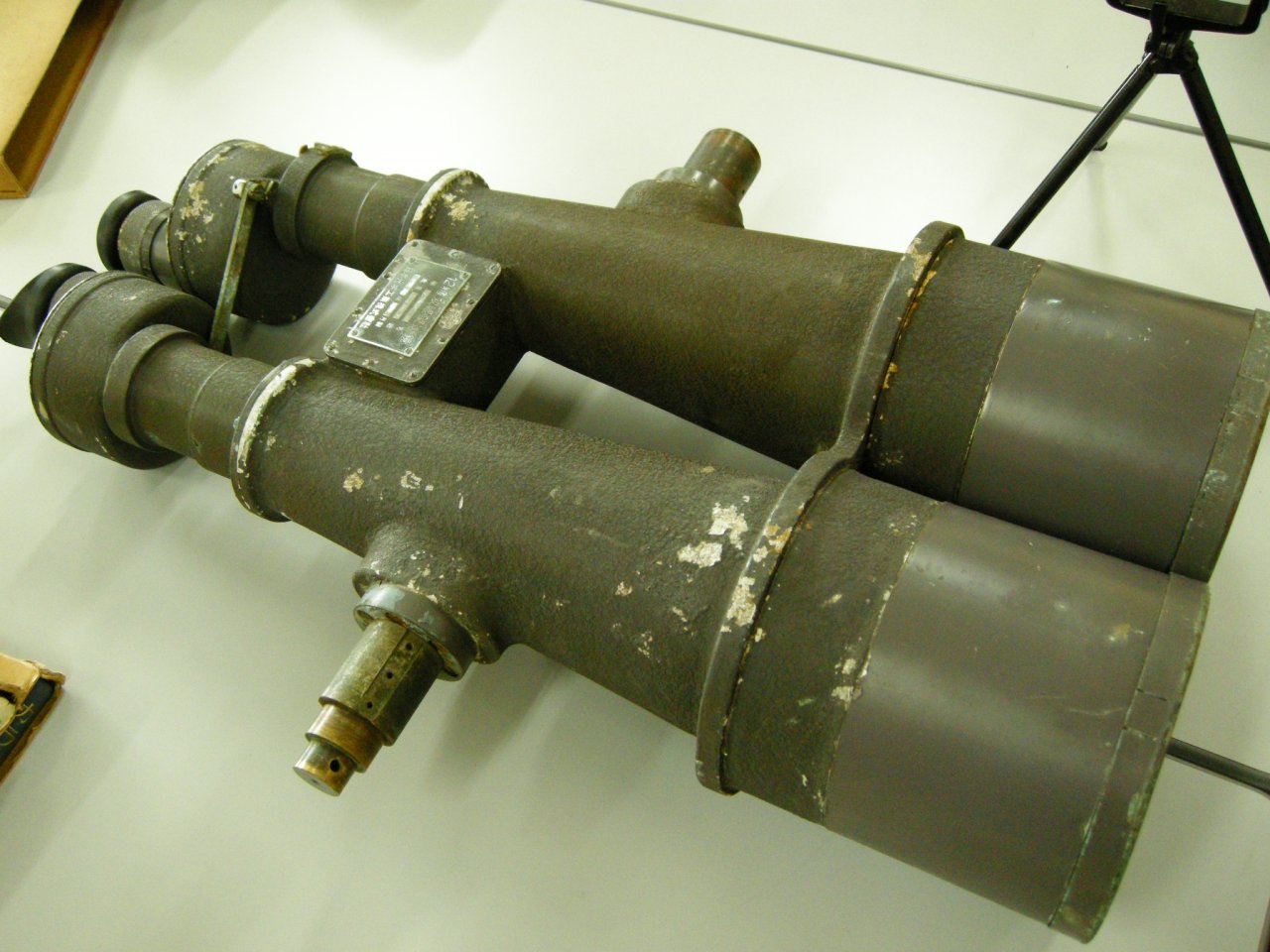
Tokyo Meeting Mini Convention Super Presentation for Nippon Kogaku Enthusiast Shigeki Terada, an engineering specialist of the Dodaira astronomical observatory, a member of the Nikon Kenkyukai Tokyo, director of the telescope division talked about his great work. Let's enjoy a presentation program in Tokyo Meeting mini convention together. Please don't sleep!

Shigeki Terada's Excellent Presentation The following is summary of Shigeki Terada's presentation. A Historical and Optical Study of Big Binocular Telescope in the Showa Era Recently, I got a chance to restore pre-WWII high-view angle binocular telescope and 30's of Showa-era binocular telescope. This abstract state some information from this two binocular telescopes during the restoration.

Sample 1 Nikko 15x4 10cm Sample 1 is Nikko 15x4 10cm high-view angle binocular telescope. Serial number is 274. Production period was confirmed that there is a sign "Showa 12th November" on the Rhomboid prisms. This sample is come from Kawasaki city Kanagawa prefecture in Japan. Objective lens effective diameter is 10.5cm, focal length is 525mm. Lens type is 2 elements Fraunhofer type achromat spaced by 30micron thickness tin foil. Radius of each lens measured by spherometer, and focal length measured by nodal slide substituted to optical designing software. The result suggest L1 (1st convex lens) is made of BK8, L2 (2nd concave) is made of F1. The eyepiece f=35mm, FOV=70degree, consist of 3 groups 5 elements. This design is very similar to the Japan patent No.87139 invented by Kakuya Sunayama in Showa 5th. But 1st (nearest to OBJ.) and 3rd radius are plane. This modification may be a "Kaizen" to improve productivity. Only L1 is made of BK7 was known. Electing and eye distance adjusting system is made by 70degree Amici roof prism and Rhomboid prism. Any anti-reflection coating aren't applied. Waterproof mechanism is made with applied grease and waterproof oil cray on every spacing (gap) of screws and labyrinth structure on the mating surfaces of every flanges. These are still keeping effectiveness, every optical surfaces inside the tube was very clean and no stain. Some writings suggest the tube (main mechanical structure) is made of "Electron" (magnesium alloy), but this sample looks made of usual aluminum alloy. Eye distance adjusting mechanism is made by very unique, interesting letter form of "8" shaped steel belt around between 2 prism barrels. But the steel belt was turned off long time before, may be during in the battlefield. Newly reproduced one is replaced. Painting color is yellowish gray, and cell of lenses have usual flat surface. But tube and prism barrel have sand touch surface made by sprinkling cork powder. After cleaning of all optics, very clear image is restored. Although stray lights made by non-anti-reflection coated surfaces are strongly observed, every aberrations are well corrected even if consider F5 objective. Contrast of images are very high.

Sample 2 Nippon kogaku 20x3 12cm Sample 2 is Nippon kogaku 20x3 12cm binocular telescope. Serial number is 7230. Production period could not be confirmed that there is no obvious sign, but it is estimated Showa 37th from serial number. This sample is come from Yaizu Shizuoka Prefecture in Japan. Yaizu is famous for the fishery. May be used by tuna or bonito fishing vessel. Objective lens effective diameter is 12cm, focal length is 600mm. Lens type is 2 elements Fraunhofer type achromat spaced 2.5mm using brass spacer ring. With same measuring method, estimated glass type are BK8 and F1. The eyepiece is also similar design to sample 1. f=30mm, FOV=70degree, consist of 3 groups 5 elements. Electing and eye distance adjusting system are made by Porro II prisms which optical axis shift distance is 52mm. Single layer MgF2 anti-reflection coating is applied on all transmitting optical surfaces. Waterproof mechanism is similar to a sample1. O-ring are applied nowhere. Airtightness is still keeping effectiveness, every optical surfaces inside the tube was very clean and no stain. There is a dryer (silica-gel) case between two main tubes. Two black silk silica-gel bags (weight:2x50g) are in it. After restoring moist dryer and refilled, moist indicator (CoCl2 instilled paper) put on the inside of the right hand tube indicate good humidity condition more than 1 month. Comparing with sample 1, most mechanical parts made of bronze or brass are replaced to aluminum alloy assumed for the purpose of weight reduction. Painting are dark reddish gray flat surface on hoods and eyepiece barrels. but the tube and prism barrels have dark greenish gray crepe touch surface. After cleaning of all optics, very clear image is restored. Stray lights are also made minimum by anti-reflection coated surfaces. Although slight chromatic aberration are observed, every aberrations are well corrected. Contrast of images are very high. In conclusion, compared with a state of the art wide field binoculars using ED/SD glass and multi or phase compensating coating, inferiority of transparency and remaining chromatic aberration are obvious and "outdatedness" are felt. But disparity between new one and them is not so big contrary to the anxiety. By the point of view for the pre O-ring water-proof/anti-humidity technology and durability for optical weapon are already come up to completeness and are laudable. In particular, the technical level of this high-view angle binocular telescope only passed 20 years from establishing of 1st designing are laudable. The assumed designer Kohgoro Yamada, the then Naval Technical Rear Admiral and Kakuya Sunayama, the then Senior Manager of Designing Division of Nippon Kogaku should be looked up to as a great engineer.
Shigeki Terada Special Download
A Historical and Optical Study of Big Binocular Telescope in the Showa Era
Do you know the black silk bag is stored in binoculars? Next Page Articles → Next Chapter 4 Nikkor Telephoto Lenses Shortcuts
Chapter 0
Top Page
Copyright Michio Akiyama, Tokyo Japan 2010, 2024 |